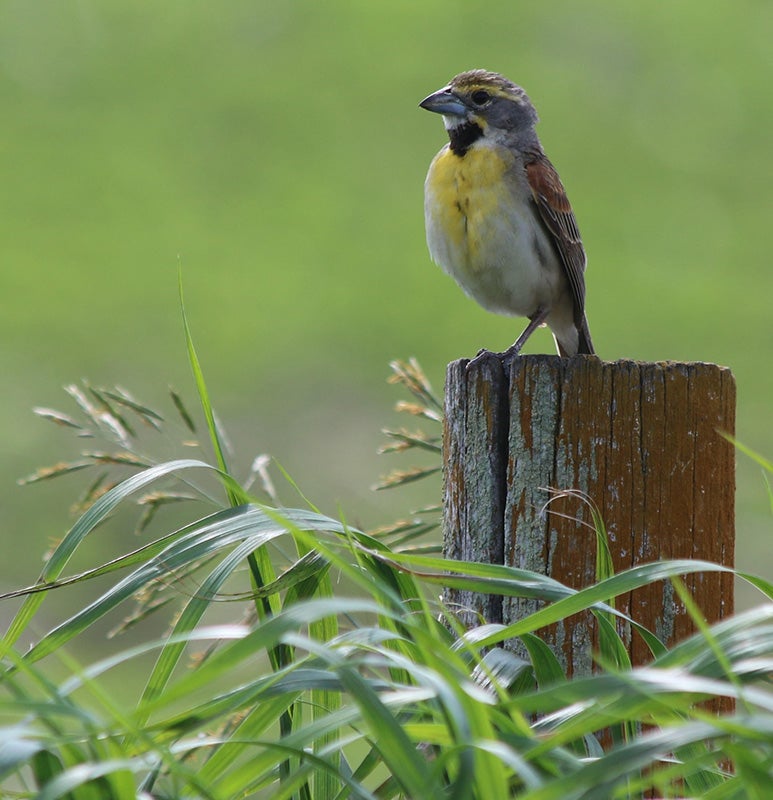Al Batt: Keep eyes open for ring-necked pheasant chicks as late as August
Published 9:00 am Saturday, July 28, 2018

- Bryce Gaudian of Hayward took this photo of a dickcissel. Provided
My neighbor Crandall stops by.
“How are you doing?” I ask.
“Everything is nearly copacetic. Pop claims the only exercise he gets is from opening pill bottles. He decided to go to one of those fitness centers, but he missed his turn. His GPS told him to turn around. Pop said that would have been stupid because if he’d turned around, he wouldn’t be able to see where he was going. He said he had diarrhea and his boots leaked, so I took him to the clinic. The receptionist asked his name. He didn’t have his hearing aids in, so Pop didn’t answer. She said, ‘I don’t have any easier questions.’ We waited to see the doctor. Pop sat next to a guy he was confirmed with. The fellow was there because of a problem with constipation. The two talked for a bit before Pop decided he wanted to go home.”
“Why?” I said.
“He reasoned that with his diarrhea and his friend’s constipation, on average, there was nothing wrong with either of them.”
Naturally
I was happy to see young cardinals in the yard. I could tell them from their parents because of their gray-black bills. The adults have red-orange bills.
Feathers undergo wear and tear and are replaced periodically through molting. New feathers form through the same follicles as the old ones. It isn’t the Olympics, but molting takes much energy.
The mulberry trees seemed lonely. Robins had perched in them, waiting for the fruits to ripen. Now the mulberries were gone and so were the robins.
Canada thistle appears to be at the peak of flowering. It’s a European perennial that is invasive. Thistles provide nesting material and food for the American goldfinch, a late nester with most of its nesting taking place during July and August. The female builds a tightly woven cup of plant fibers to hold four to six eggs. Her nest is built well enough to hold water.
A common nighthawk entertained me. During the breeding season, the male makes a booming sound by flexing his wings while diving, causing air to rush through his primaries.
Purple martins begin to gather for migration. Peak migration is typically late July through September. Dickcissels are numerous. A dickcissel looks like a miniature meadowlark with a black, V-shaped throat patch on a bright yellow breast. The bird is named for its loud, persistent song.
I strolled down a rural, gravel road on a steam bath of a July day. Achillea millefolium, commonly called common yarrow, was abundant on the roadsides. The genus name, Achillea, is in reference to Achilles, hero of the Trojan Wars in Greek mythology, who used the plant to stop the bleeding and to heal the wounds of his soldiers. The species name, millefolium, means thousand-leaved in reference


